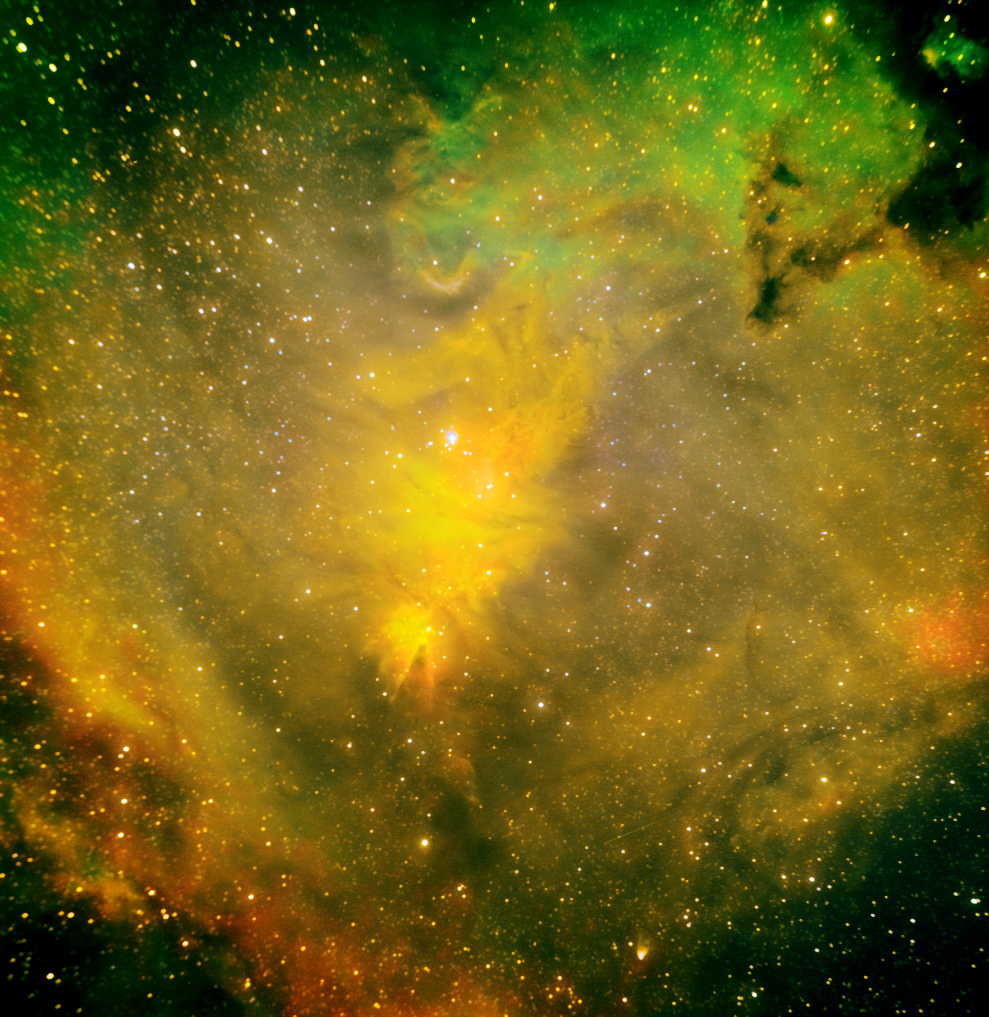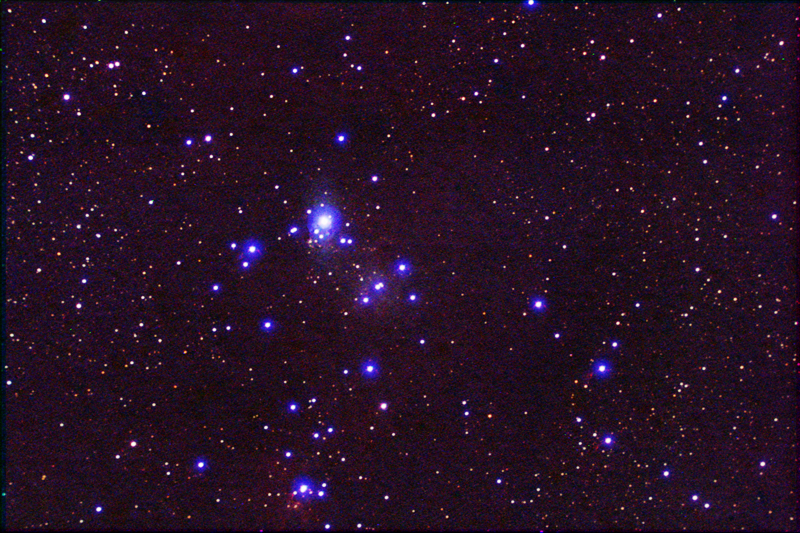
Combination of 2, 60 second images, SBIG ST-8E CCD.
8" f/10 schmidt-cassegrain telescope with f/3.3 focal reducer.

NGC 2264 is a small cluster of bright stars in Monoceros, near the border with Gemini. The brightest stars are all hot, blue main sequence stars and appear in the telescope as an inverted wedge which gives rise to the more common name, "The Christmas Tree Cluster".
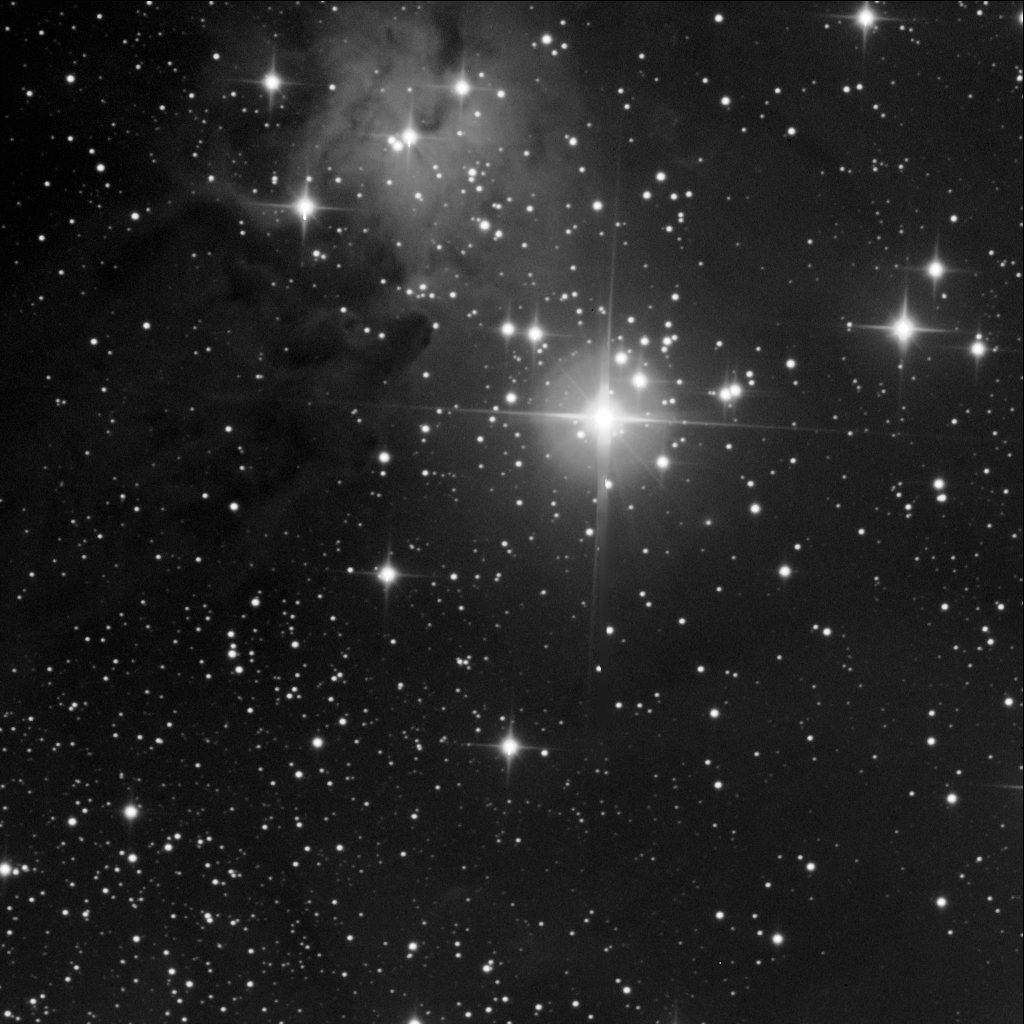
The cluster is very large, and so only the central region is visible in the image above. The brightest star in the cluster is the O-type star, 15 Monocerotis. While the cluster draws visual observers to this region, astrophotographers are more interested in the faint nebulosity surrounding the cluster. Surrounding the cluster is Sharpless 2-273, a very large and faint mixture of reflection and emission nebulosity.
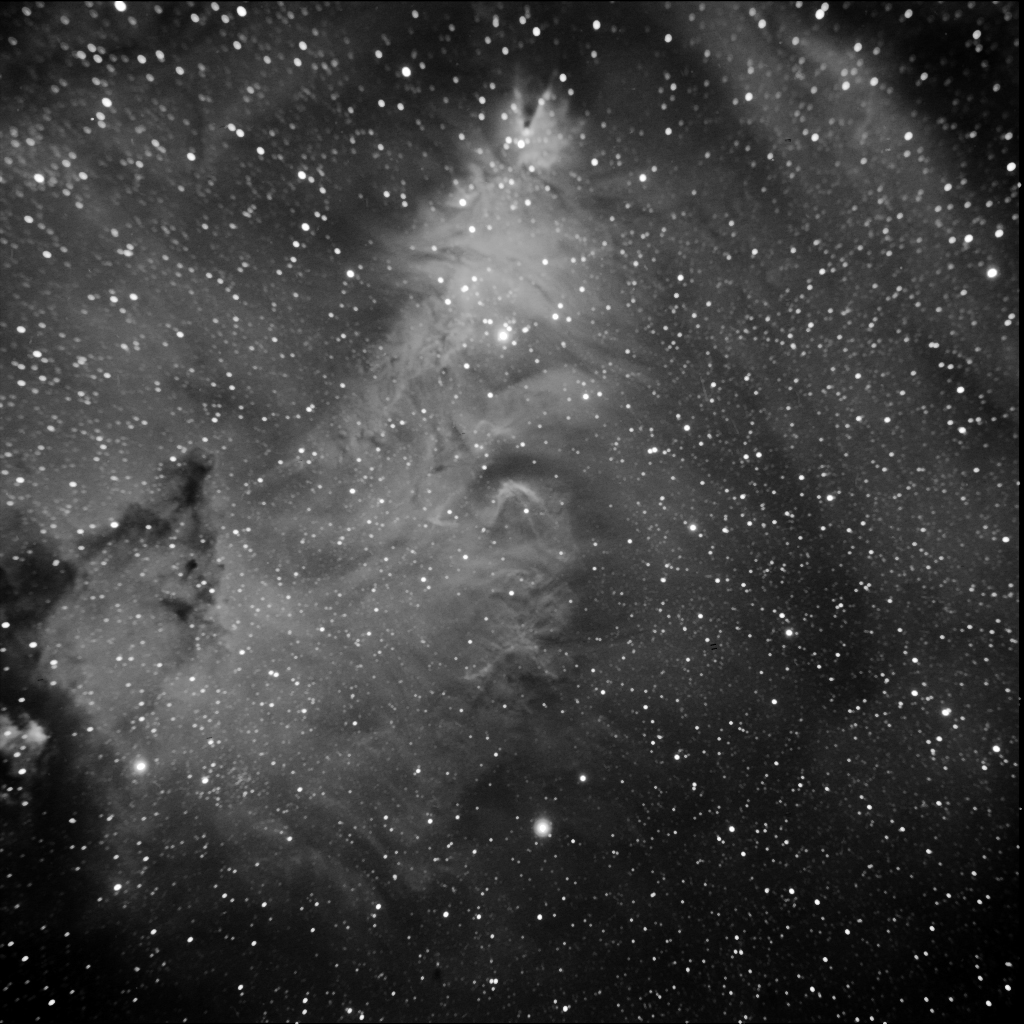
The most interesting section is just south of the tip of the christmas tree. Here there is a dark wedge of obscuring dust that is commonly known as the "Cone Nebula". This is visible in the images below.
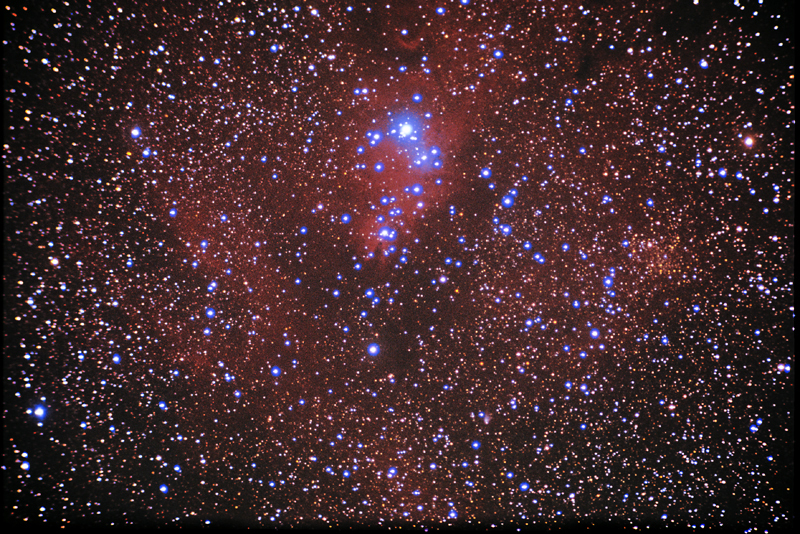
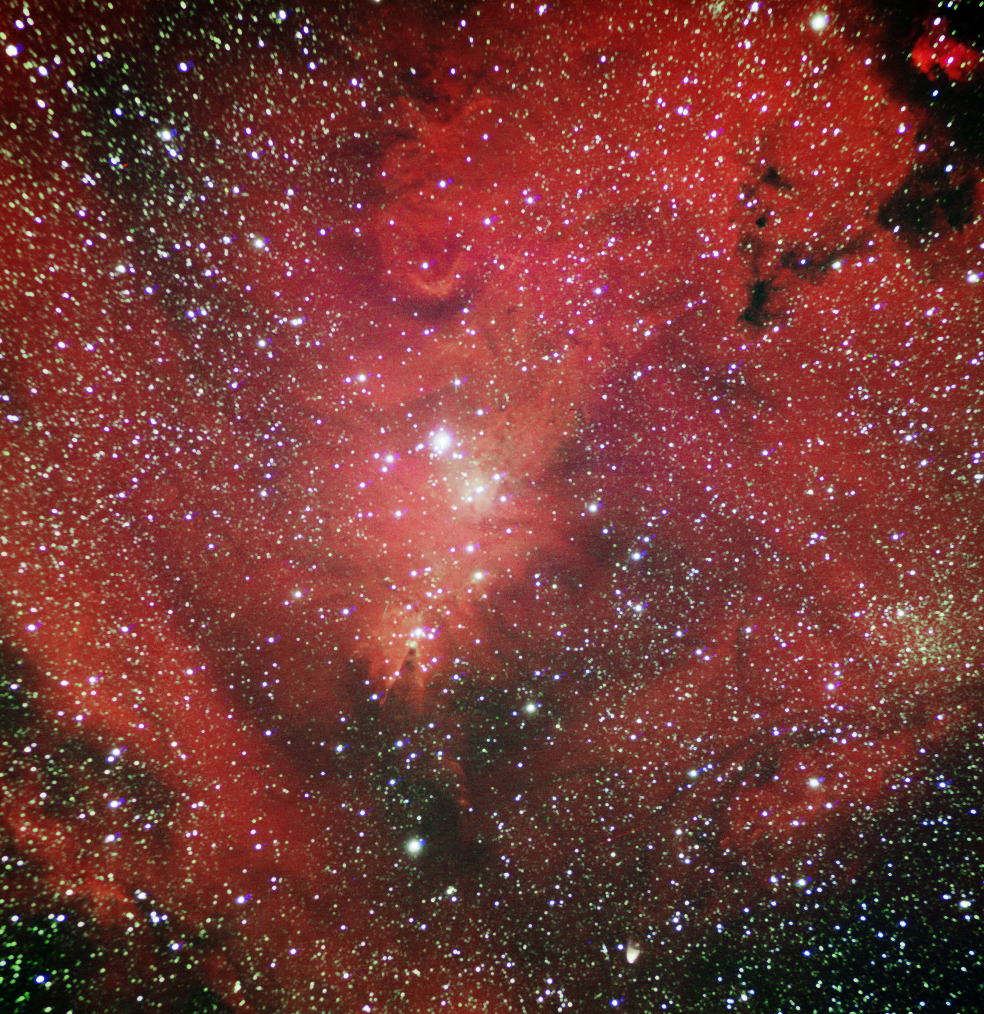
When using narrow-band filters, there are several ways of combining the individual channels. One of the ways is to use the SII filtered images as the red channel and the H-alpha as the green channel. This is the method favoured by astronomers using the HST. The other is the reverse of this:- to use the H-alpha as the red channel and the SII for the green. This is the method favoured by ESO observers. Technically, the HST method is the more correct as the SII wavelength is a little longer than the H-alpha. However the advantage of the ESO method is that the images tend to have a more "natural" colour. The above image was processed using the ESO method. Below is the same image processed using the HST method.
